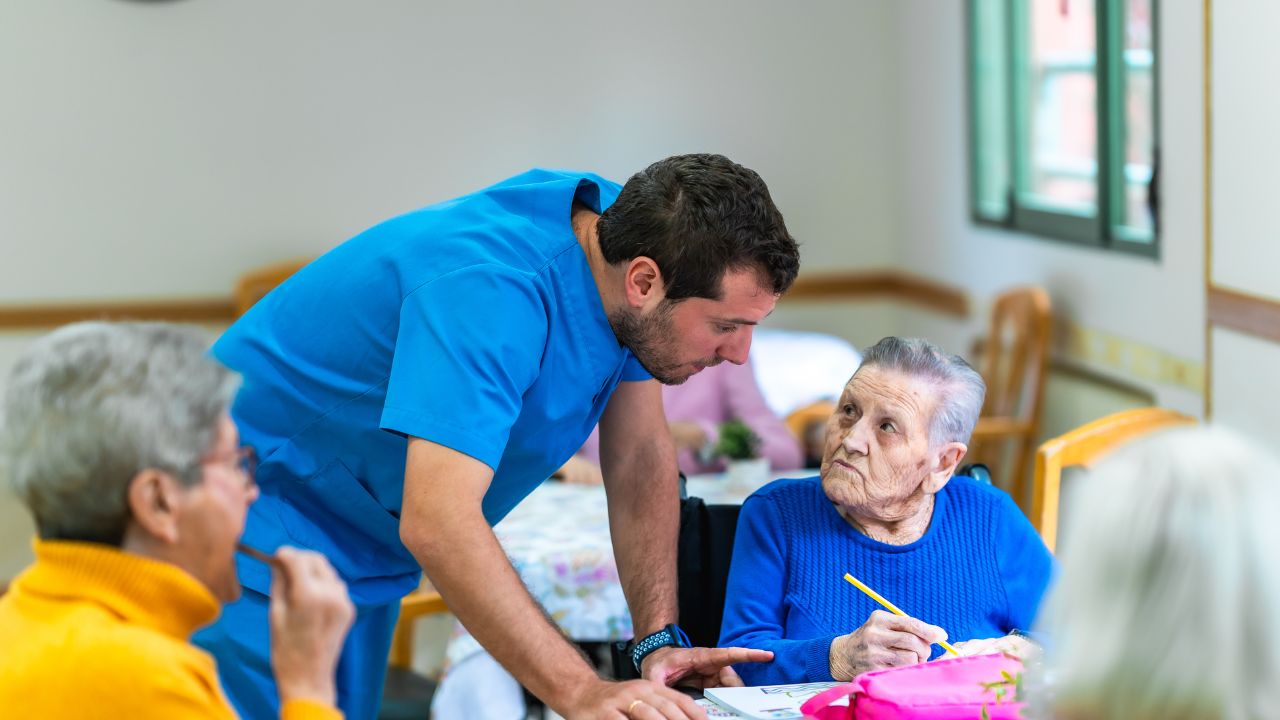Helpful, supportive, informative, and calming are just some characteristics of a nursing professional at any level you may choose to pursue. The nursing profession is demanding in many ways, but it is also comforting and gives a sense of fulfillment no matter your career path.
There are different levels of nursing, and the course to take can be confusing. Therefore, we will give you more clarity by explaining the differences between the various levels of nursing professionals.
Is There a Nursing Hierarchy between Degrees?
You can choose from various nursing careers; the requirements, education, and responsibilities differ. In general terms, the higher the level of education, the higher the level of licensure a nurse can obtain. However, all nursing roles are equally important, and the ideal path will depend on a nurse’s particular interests and goals.
What’s the Order of the Various Nursing Levels?
The following list shows the different levels in the nursing profession, detailing—with certain considerations—their job responsibilities and the requirements to obtain the degree, license, certificate, or position:
1. Certified Nursing Assistant (CNA)
Job Responsibilities: Certified nursing assistants, also known as nurse’s aides, often work in long-term care and home health—but they are not limited to these types of facilities. Nursing assistants can also be found in the hospital setting, where they are often referred to as patient care techs (PCTs). CNAs typically help patients with their activities of daily living (ADLs), such as bathing, eating, toileting, and transferring. CNAs may also check vital signs, depending on where they work. In some settings, they may be the first contact between the patient’s family and the healthcare facility.
How to become a CNA: To become a CNA, you generally need to have the following requirements:
- You typically need to complete a state-approved CNA program, which typically lasts four to 12 weeks.
- After completing the program, you usually need to pass a state-approved CNA test.
Each state has its requirements, and this is just a resource for the typical process—check with your state in which you want to practice for the specific process.
2. Licensed Practical/Vocational Nurse (LPN/LVN)
Job Responsibilities: LPNs, known as LVNs in Texas and California, communicate between patients and the healthcare team. Furthermore, they alert physicians or registered nurses of any status change in the patient, take blood pressure, insert catheters, change bandages, and administer medications, amongst other tasks.
How to become an LPN: LPNs do not require an associate’s or bachelor’s degree. However, they typically must complete the following requirements:
- It is necessary to complete a licensed practical nurse program, which takes around one year.
- To become an LPN, pass the National Council Licensure Examination for Practical Nurses (NCLEX-PN).
- Aspiring LPNs must also apply for licensure through their State Board of Nursing or other licensing body and may need to fulfill other requirements.
Each state has its requirements, and this is just a resource for the typical process—check with the state in which you want to practice for the specific process.
3. Registered Nurse (RN)
Job Responsibilities: Registered nurses have different responsibilities depending on the facility or particular unit they work for and their specialization. They administer medications, monitor symptoms, record a patient’s medical history, collaborate with doctors, and contribute to the patient care plan. These are some of the general responsibilities of an RN. However, registered nurses can work and specialize in particular areas or units. For example, an RN could become an intensive care unit (ICU) nurse or an emergency nurse.
How to become an RN: To become an RN, you will typically need to complete the following requirements:
- First, you generally need to earn a two-to-three-year associate’s degree of science in nursing (ADN) or a four-year bachelor’s of science in nursing (BSN).
- After you complete the program of your choice, you need to take the NCLEX-RN, which is different from the exam for LPNs.
Both associate’s and bachelor’s degrees registered nursing schools are valid for obtaining an RN license. However, if you wish to continue your studies with a master’s or doctoral degree, a BSN is often a prerequisite.
Each state has its requirements, and this is just a resource for the typical process—check with the state where you want to practice for the specific process.
4. Advanced Practice Registered Nurse (APRN)
Job Responsibilities: Advanced practice registered nurses have a more directive position. Compared with RNs who implement the patient care plan, APRNs direct the care plan. Therefore, if you are an RN and would like to become a director of nursing and manage staff operations, or if you want to educate the new generation of nurses, you can become an APRN. These are just some job opportunities you will have as an APRN since possible services range from providing primary care to accompanying births to administering anesthesia.
The following list shows different types of APRNs:
- Nurse Practitioners: They usually diagnose and treat diseases and different health conditions, prescribe medication, and order, perform, and interpret tests.
- Nurse Midwives: They specialize in women’s reproductive health and childbirth. They assess pregnant women in prenatal visits, attend births, and provide postpartum care.
- Nurse Anesthetists: They provide pain medicine before, during, and after surgery. They also monitor the patient’s biological functions.
- Clinical Nurse Specialists: They develop specialized patient treatment plans, analyze patient data and outcomes, and work with the nurse staff to optimize care.
How to become an APRN: Typically, you will need a Master of Science in Nursing (MSN) or a Doctor of Nursing Practice (DNP). The following list shows the requirements to become an APRN:
- You typically must be an RN and have at least one year of experience.
- You must complete a two-to-three-year graduate program.
- After completing your MSN or DNP, depending on your specialty, you may need to meet other requirements and certifications.
Each state has its requirements, and this is just a resource for the typical process—check with your state in which you want to practice for the specific process.
5. Chief Nursing Officer (CNO)
Job Responsibilities: Also known as chief nurse executives, CNOs manage finances, implement treatment plans, assign schedules, and direct all the operations of nurses and patient care services. In addition, CNOs guide the nurse team towards achieving the different objectives and improving patient outcomes. Also, chief nursing officers report to the board of executives on any topic related to the nurse staff.
How to become a CNO: The following list shows the typical requirements to be a CNO:
- You most commonly need an MSN focused on management and leadership.
- CNO positions usually require nurses to have five or more years of experience in management positions.
Each state has its requirements, and this is just a resource for the typical process—check with the state in which you want to practice for the specific process.
6. Doctor of Nursing Practice (DNP)
Job Responsibilities: A doctor of nursing practice is a degree, not a role. As a DNP, you will typically work in different healthcare settings as an administrator, healthcare executive, or in a director-level position.
As a DNP, you can also work in nurse management, state and national health policies, health informatics, and organizational leadership.
How to become a DNP: The following list shows the requirements to become a DNP:
- You usually start your program with a BSN or an MSN. Some doctor of nursing practice programs require an MSN. Some programs allow you to start the DNP program with a BSN, but it takes more years to finish the program.
- Depending on your nursing degree, there are different requirements for how long you must continue your nursing education.
Each state has its requirements, and this is just a resource for the typical process—check with your state where you want to practice for the specific process.
7. Doctor of Philosophy in Nursing (Ph.D.)
Job Responsibilities: Professionals with a Ph.D. in nursing can conduct and direct research teams to develop theories, maintain the vanguard of nursing knowledge, and uphold the highest standards for the profession. Preparing the new generations is another possibility nurses with Ph. D.s can consider. They can work as clinical research unit managers, faculty instructors, and program directors.
How to become a Ph.D.: The following list shows the requirements to become a Ph.D.:
- You can start the program with a BSN or MSN.
- Programs usually take four to six years to finish.
Each state has its requirements, and this is just a resource for the typical process—check with your state in which you want to practice for the specific process.
Which Nursing Role Is Right for You?
As a current or aspiring nursing professional, you have plenty of options to choose for your career path. Whether you become an APRN or an RN, start at an entry-level position, or even stay in your current role depends on your goals and what you want to achieve.
This article shows just an overview of the nursing hierarchy tree. Every tree has branches, and you can explore specific work settings or specializations within various levels. Still, now you know what to expect across different degrees and, most importantly, whether these options suit you. For example, some degrees or licenses may take you to a more administrative role, whereas others involve more direct contact with patients. Therefore, you need to have a clear idea of what you like most in the profession.
Another factor to consider is how much you want to invest in pursuing your goals.
Finding Jobs for Every Nursing Level
Nursing professionals at all levels are in high demand, and there are many ways to find jobs. However, there is an excellent choice for you to find jobs near you or in other cities or states. The option for this is Nursa, an open healthcare marketplace where you can find shifts in different facilities, units, and positions.
In Nursa, you will find per diem jobs, meaning the jobs you see will be by the shift. A per diem job helps you be more flexible and balance your time between work and personal life. In addition, working by the shift, you can earn a higher hourly wage than the average income whether you work full-time as a per diem nurse or pick up less than 40 hours weekly. In this type of work, you become an independent contractor who can choose where and when to work. Download Nursa today to pick up PRN jobs.














